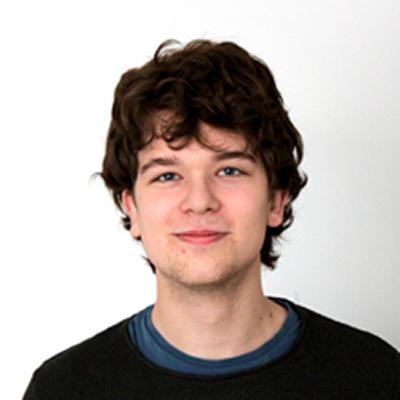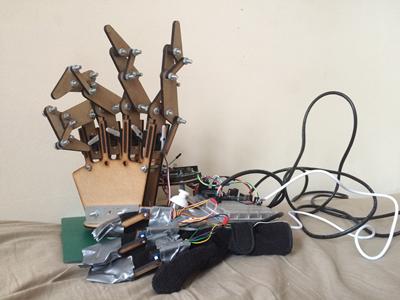Henry Barnard Mechanical Engineering, second year

From an early age, I loved to design and build. In a way I think I was bound to study engineering, there is no path I would rather be on.
Find out about Henry's experience

From an early age, I loved to design and build. In a way I think I was bound to study engineering, there is no path I would rather be on.
Find out about Henry's experience

Why did you choose to study Mechanical Engineering?
From an early age, I loved to design and build. My family always told me that I would make a great engineer, and encouraged me to pursue it as far as I wanted. They even bought me a Lego robotics kit which really inspired me to keep inventing. In a way I think I was bound to study engineering, there is no path I would rather be on.
Why did you choose to come to Southampton?
Honestly, before A-levels I had never even considered the University of Southampton; but it wasn’t long after stumbling across it that I fell in love with the University. Between the fantastic facilities just on campus (including the Stag’s Head pub), and the course ranking in the top 10 in the UK, it didn’t take much to convince me.
What have you enjoyed most about your course so far?
In terms of theory and learning, the most enjoyable part so far for me was beam theory, within Statics.
Would you recommend your course to other students?
Definitely, it has in my opinion the perfect mix between challenging theory and fun design tasks.
Have you undertaken a design project as part of your course? What was your favourite part?
The second year 3d printer task has been my favourite; going from concept to finished product is such a satisfying feeling. Having the freedom to be creative and go at a task in whichever way you want.
How did you get involved in Project Arduino?
After finding an email from my Faculty, my friends and I entered to form a team together. Unfortunately, they couldn’t make it on the day but I luckily I found help in the form of Matt and Rob from Electrical Engineering.
Tell us about your project, how did you design, build and test it?
The whole project was a bit of a blur really! With only two weeks, time flew by and so much of what we achieved was based on a great deal of intuition. The robot was a prototype bomb disposal unit. I worked almost exclusively on the physical design of the robot, being a mechanical engineer my electronics know-how didn’t come close to that of Rob and Matt. We started with drawings, mainly of fingers and how they bend, and used these to make a computer model. Right from the start we knew that the hand would need a lot of trial and error to see what would work and what wouldn’t. As a result, we chose laser cutting (which is fast) as a means of fabrication and MDF (which is cheap) as the construction material.
Before long we had our working prototype of a finger, and soon after, our full set. Once the hand was fully made, it was just a case of attaching it to the car and my job was mostly done! The glove controller was my next challenge, mounting the sensors that were necessary for the control system.
My one regret with this project was not leaving enough time for that glove. When we realised we were only days away from judging, the duct tape had to come out! With my part done, Matt and Rob (who were busy coding and helping me build through the entire process) did wonders with the electronics, and improvised brilliantly when the parts we needed didn’t arrive in time. I helped where I could at this point, but unfortunately had to leave for the crucial final weekend before judging. Sure enough when I got back on the Monday, Matt and Rob had it running beautifully, and with a fully edited video. With that, it was time for the judging.
How have you been able to use the theoretical and practical skills from your course?
Without a CAD model, the project would have gone nowhere fast. It really helped to visualise the hand initially and figure out the kinematics before wasting any time building. It’s important to emphasise how big of a job the electronics and coding was in this project.
Whilst I didn’t work on much of the electronics, it was still incredibly useful to have the background information from my course that I had.
It really helped me to understand what and why Matt and Rob were doing what they were doing.
Which of the University’s facilities have you used, and have you had support from your academics?
The design studio in building 13 was extremely useful, and allowed us to utilise a laser cutter to make the majority of the parts, along with various other workshop tools. Chris, who works in that design studio was incredibly insightful when it came to building. Tim Woolman, from the EDMC had some great advice for the design of the hand. Without the both of them to advise us we would have been set back by days and probably not finished. I must thank Dr Stephen Prior also, who agreed to loan out a set of robotics components that otherwise would have cost us far beyond our budget.
Have you enjoyed working as a team with students from across the University?
I do enjoy it, especially when the team has such a range of talents. It’s so insightful to see how different members go about the problem, and how varied the knowledge is amongst the team.
In my case, seeing how Matt and Rob thought about the coding issues and debugged everything was incredible. It's also great for learning or improving skills; I learnt a great deal of coding from them in such a short time!
What has been your favourite part about entering the competition and what have you learned?
My absolute favourite moment in this project was the first discussion I had with Rob and Matt. It isn’t often that you get the freedom to be as ambitious as you like, and it’s even less common for the whole team to be on-board with the idea. I couldn’t have been happier when the three of us were in agreement, we were to go all out and build the best thing we could, and we were to see it through right to the end.
I’ve learnt most importantly that in a project like this you have to trust your team, and they have to trust you.
What would you like to do after you’ve completed your course?
My plan is to work in the computational modelling area, and work on Finite Element Analysis systems.